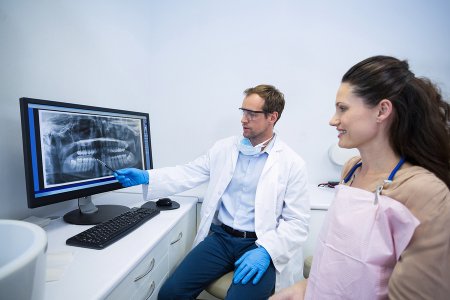Oral cancer screenings are important parts of dental exams. Because oral cancer is much easier to treat in its early stages, screenings allow your dentist to diagnose cancerous lesions and begin care as early as possible. Here are the answers to questions patients frequently have about oral cancer screenings.
Are oral cancer screenings painful?
Oral cancer screenings involve your dentist doing a visual examination of the tissue in and around your mouth. The test is completely painless. If your dentist is concerned about anything he or she sees, you may need to have the tissue biopsied. Your dentist may perform this test in the office or refer you to another specialist for the biopsy. During a biopsy, a small amount of tissue is removed for further examination. If you need a biopsy, a local anesthetic can be used so that it is completely painless.

How often do I need an oral cancer screening?
Typically, your dentist will perform an oral cancer screening as part of your twice-yearly routine dental exam. If you have multiple risk factors for oral cancer or have had cancerous lesions in the past, your dentist may recommend that you have screenings more frequently. Smoking is one of the most significant oral cancer risk factors, so if you are a smoker, your dentist may want to examine you more often than twice a year.
What happens during a screening?
Your dentist will closely look at your lips, cheeks, tongue, soft palate, and tonsils. He or she may direct a light at the tissue to see if more clearly. Your dentist may depress your tongue and move it from side to side during the screening to see all sides of it. He or she may also feel your neck to see if there are any lumps under the skin.
Oral cancer screenings are part of the preventive care we provide at Glenwood Premier Dental during our dental exams. Make an appointment for an oral cancer screening in Hazlet by calling (732) 264-4477.

